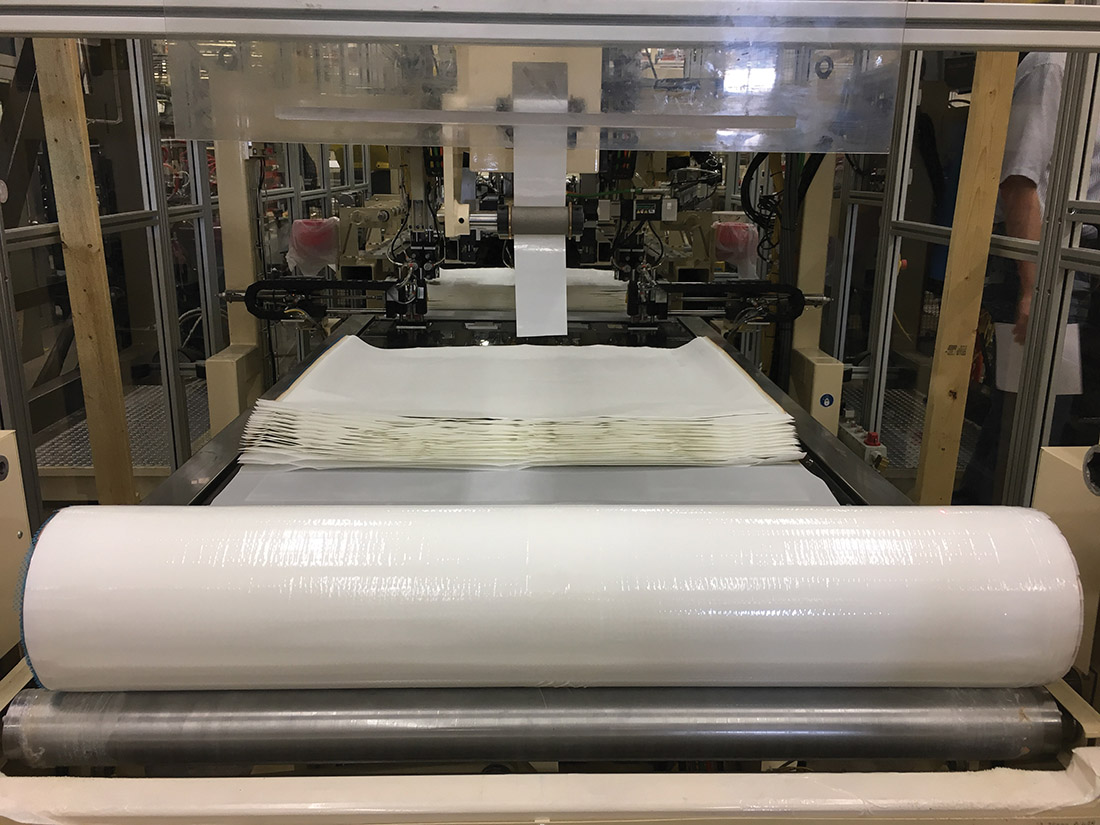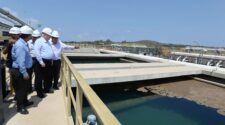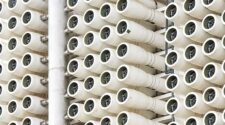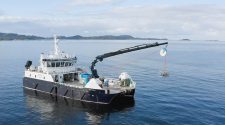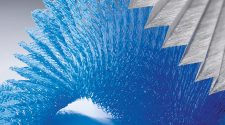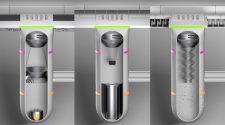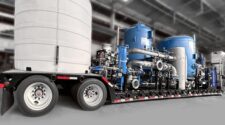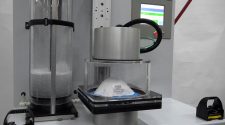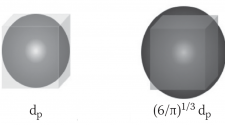A spiral-wound element has significant surface area, resulting in extremely high packing density. The filter is also easy to install and maintain in the system, and it offers a long life due to the durability of the spiral-wound element.
The history of desalination dates back to Aristotle and other intellectuals in ancient Greece. In the early days, desalination was based on the process of evaporation, which requires a lot of energy (and time). Membrane desalination has evolved side-by-side with thermal desalination over the last 70 years. The limiting factors for each technology are energy efficiency, economies of scale and optimization of the processes.
Spiral-wound cartridge technology
The introduction of spiral-wound membrane elements with a larger number of shorter membrane composites offer increased efficiency versus other common methods of desalination. This is because the membrane is more productive via higher flow with less pressure. Today’s most efficient elements have more than twice as many membrane composites compared to older designs. With spiral-wound cartridges, clean water production is attained with significantly less membrane elements than other forms of RO, which has a profound effect on the size of the membrane equipment and the footprint of the desalination facility, which ultimately reduces the cost of water production.
A spiral-wound filter cartridge is a made up of many flat sheet composites glued together on three sides like a re-sealable plastic bag. The open end is linked to the middle of the filter to discharge clean water. The pressure of nearly 100 elephants standing on the area of a manhole cover is needed to push clean water through these spirally wound flat sheets to enable desalination. All this pressure comes at a cost though, which is why desalination of this sort is approximately 10-times more expensive than filtering fresh water.
Why spiral-wound cartridges for desalination?
A spiral-wound element has significant surface area, resulting in extremely high packing density. The filter is also easy to install and maintain in the system, and it offers a long life due to the durability of the spiral-wound element.
Spiral-wound desal systems may be assembled from prepackaged models. The modular system allows for high mobility, making spiral-wound RO plants ideal for emergency water supply use. Low-maintenance, low-cost, nonmetallic materials are also benefits of spiral-wound cartridges.
Why not spiral-wound cartridges for desalination?
Thermal desalination does offer some key advantages over spiral-wound RO technology, in that it does not require significant pre-treatment of seawater and tolerates variations in seawater conditions. There are also no sensitive membranes to foul or spare parts inventories to maintain. Finally, thermal desal systems are highly reliable and simple to use with low maintenance costs, and they can utilize many sources of heat to power the systems.
What about forward osmosis?
The forward-osmosis process exploits the natural process of osmosis, which is how plants and trees take up water from the soil via a low energy, natural process. It works by having two solutions with different concentrations, or more specifically, different osmotic pressures separated by a selectively permeable membrane. In the case of plants and trees, their cell walls act as a membrane, and “pure” water flows from the less concentrated solution across the membrane to dilute the more concentrated solution, leaving the salts behind.
In industry, this process is claimed to have a lower energy consumption rate than traditional pre-treatment including ultrafiltration when operating on difficult feedwaters. Membranes for forward-osmosis need to be more fully developed to take advantage of what nature has perfected. A forward-osmosis filter will be constructed in a spiral-wound configuration similar to reverse osmosis, but it will not require the high cost of high-pressure vessels, pipes and pumps to support the process. Adoption of this technology will take investment to accelerate and solve performance issues and develop systems to accommodate them.
Parting shots
The closest analogy to the advancement of reverse osmosis desalination technology is the dynamics in computer technology. Conventional technologies, such as sedimentation and filtration have seen little advancement since they were first applied for potable water treatment in the 18-th century. New, more efficient membranes and membrane technology and equipment improvements are released every several years. Similar to computers, the RO membranes of today are many times smaller, more productive and cheaper than the first working prototypes.
Material science advancements – especially super thin graphene-oxide membranes – will continue to drive efficiency in all RO systems used for desalinization. These membranes are mathematically two-dimensional and just a single atom thick. These marvels are fashioned in a honeycomb pattern with pore size of 0.284 nanometers, whereas the size of a water molecule is 0.275 nanometer. So the gap is just large enough to send the water molecules through and exclude sodium chloride molecules with a size of 0.564 nanometers – essentially twice as big as the pore size of the membrane. Once scalable and stable in water, graphene technology figures to have a big impact in the area of desal, so stay tuned.


